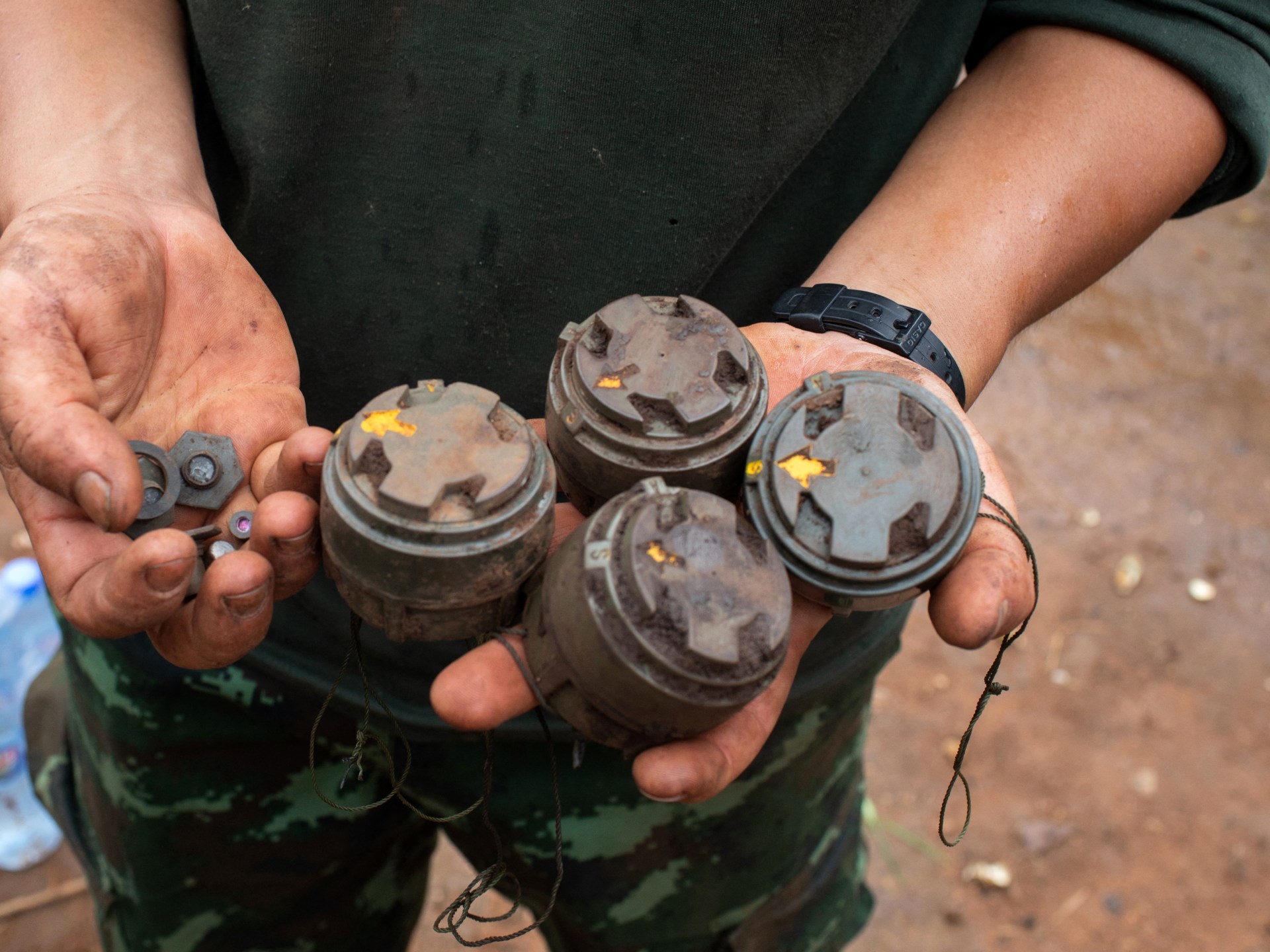Idaho
Cuts From Congress Could Hurt Recruitment for Teach For America Idaho

Support The 74’s year-end campaign. Make a tax-exempt donation now.
Teach for America Idaho faces a potentially devastating blow to our programs should the U.S. Congress enact the deep cuts to the AmeriCorps program that are currently under consideration.
An important piece of Teach For America Idaho’s work focuses on improving the futures of Idaho youth, particularly those in rural communities. In a number of ways, AmeriCorps funding plays a key role in our programs.
Teach For America teachers are also AmeriCorps members. They can use Segal AmeriCorps Education Awards to pay for teacher certification or to pay down their existing student debt. Participation in AmeriCorps also enables them to defer their undergraduate loans for the first two years of teaching and have the interest, which accrues during those two years, paid off by the federal government.
These awards help us recruit a more socio-economically diverse teaching force, which helps boost student learning in underserved communities. If this significant benefit were to disappear, it would have a strongly negative impact on our recruiting efforts. Since launching in Idaho in 2015, Teach For America teachers have reached more than 30,000 Idaho students.
It has been Teach For America’s experience that many individuals who want to serve, particularly as educators, are unable to do so. They face significant economic barriers, including high student debt and the cost of teacher certification, which make it difficult to enter a lower-paying profession such as teaching.
It’s important that people understand that beyond the overwhelmingly positive impact Teach For America has on students, our AmeriCorps members also gain a great deal of knowledge and experience from working with us. They frequently turn that experience into careers.
Former Teach For America teachers now work in all echelons of our state’s education system. Some are teachers, others are principals or school board members. Their experience in Idaho classrooms, made possible in part by AmeriCorps, represents only the beginning of their contributions to education in our state.
Idaho’s congressmenRep. Russ Fulcher and Rep. Mike Simpson should know that Idahoans value the programming made possible by the presence of AmeriCorps in our state.
Reducing its footprint would harm the people who need its services most. It is truly a hidden gem in the Gem State.
Idaho Capital Sun is part of States Newsroom, a network of news bureaus supported by grants and a coalition of donors as a 501c(3) public charity. Idaho Capital Sun maintains editorial independence. Contact Editor Christina Lords for questions: info@idahocapitalsun.com. Follow Idaho Capital Sun on Facebook and Twitter.
Support The 74’s year-end campaign. Make a tax-exempt donation now.

Idaho
Obituary for Jon Edward Simmons at Eckersell Funeral Home

Idaho
In Idaho, special education departments face parent complaints, staff shortages and budget gaps – East Idaho News

(Idaho Ed News) — School districts statewide are facing a bevy of challenges as they strive to provide a free and appropriate public education to students with disabilities.
Special education staffing shortages and turnover are perennial issues. An $80 million special education budget deficit means schools have unmet needs. And complaints from parents about districts’ special education programs are on the rise.
RELATED | Special education parents, who say the system is failing their kids, take matters into their own hands
Still, schools must provide an equitable education — and that’s according to federal law. When they fall short of their duties — or when parents allege they have — it can lead to state and federal inquiries and lawsuits, which further drain school resources.
State education leaders have a few solutions in mind to ease staffing and financial hurdles — like an apprenticeship program for special education teachers-to-be, and a proposal to rethink school funding with special education students in mind. They’re also building up resources to help school leaders and parents become better partners.
It’s too early to say how helpful those initiatives will be. For now, schools are left to grapple with the status quo — and recruiting and retaining special education staff is among the most pressing problems.
Special education staffing woes persist at district and state levels
Idaho has faced special education staffing shortages every year since 2002, according to federal data.
Look on any given school district’s job openings page, or on the state’s edjobsidaho, and there will most likely be one or more special education vacancies.
That’s the trend nationally, too. Special education teachers make up 12% of the teaching workforce but amount to 24% of all teacher job postings, according to Georgetown University’s Edunomics Lab research center.
In Idaho, districts are hiring special education teachers with alternative authorizations in order to fill vacancies; they comprise 11% of special education teachers statewide.
To help with staff shortages, the state department has developed a special education teacher apprenticeship program that aims to ease the path to teacher certification for those who already work with students, like paraprofessionals. But so far, only one district has hired a special education apprentice, according to Mike Keckler, the spokesperson for the State Board of Education.
Marguerite Roza, director of the Edunomics Lab, said another way to boost recruitment and retention is with salary increases. In Hawaii, for example, special education teachers are paid an additional $10,000 on top of their base salaries.
But in Idaho, where districts are already strapped for cash, that may not be a feasible solution.
In the meantime, Idaho’s special education staffers tend to have higher student caseloads than their peers in other states. Only Idaho and Ohio have fewer than 20 special education staffers per 200 students — as compared to more than 60 in some states, according to Edunomics Lab research.
Idaho is also facing a high rate of shortages and turnover at the state level. There are 10 special education staff members at the Idaho Department of Education, and nine of them are new within the last five years, according to Scott Graf, the IDE communications director. Four are new in the past two years.
And the IDE’s special education department’s turnover rates have more than doubled in the last two fiscal years.

At the local level, Julian Duffey, the special education director at Jefferson County School district, said positions like his are known for “high burnout” and turnover as well.
On top of staffing shortages and turnover, districts are also navigating budgetary gaps that might increase as more students qualify for special education services.
Special education enrollment and costs are linked. In Idaho, that could soon lead to greater budget shortfalls
Nationally, special education enrollment is trending up, even as overall student enrollment trends down. That means on average, schools are identifying more kids as qualifying for special education, according to Edunomics Lab research.
In some states, more than 20% of students qualify for special education. Idaho and Hawaii are outliers for having the lowest special education enrollment rates in the nation, with just 12% of students qualifying for services.

The varying rates call into question whether disability diagnoses are objective or subjective, which could mean schools are over or under-diagnosing students in need, Roza said in a webinar presentation.
And Idaho falls into the latter category, according to the results of a federal inquiry. For years, Idaho was setting too high of a bar for which students could qualify as having a “specific learning disability,” a category of disorders including dyslexia.
That tracks with national research from the Edunomics Lab, which singled Idaho out for having one of the lowest qualifying rates for specific learning disability in the nation.

The state has now changed its special education manual to address the issue — making a minor but significant tweak that could lead to thousands more Idaho students receiving special education services.
That means special education enrollment will tick up — and so will costs.
Idaho Education News data analyst Randy Schrader contributed to this report.
Originally posted on IdahoEdNews.org on November 19, 2024
=htmlentities(get_the_title())?>%0D%0A%0D%0A=get_permalink()?>%0D%0A%0D%0A=htmlentities(‘For more stories like this one, be sure to visit https://www.eastidahonews.com/ for all of the latest news, community events and more.’)?>&subject=Check%20out%20this%20story%20from%20EastIdahoNews” class=”fa-stack jDialog”>
Idaho
Idaho Wine: The Holiday Party Trick You Never Knew You Needed

A few years ago, during a visit to Idaho and the wine region that was newly taking shape there, three key takeaways took hold in my mind:
- Idaho has abundant sources of natural water to hydrate its vineyards. This means that, generally speaking, vineyards there do not struggle for water nor do they need to be irrigated.
- Idaho’s wine regions are burdened unfortunately by the political designation of “Idaho,” even though its climate and geography share similarities with its border neighbors of Oregon (and the Snake River Valley AVA, or American Viticultural Area) and Washington state (and the Lewis-Clark Valley AVA).
- I should buy real estate in Idaho.
Famous last words, indeed.
Some eight years later, a reassessment of the scene, pre- and post-COVID: Idaho is still blessed with abundant water, though the supply is reasonably stressed by the spike in population during and after COVID. Idaho wine is still burdened by the non-traditional (for wine) designation of “Idaho,” though plenty of positive developmental strides have been taken to position the local industry favorably in consumers’ and the media’s minds.
And I still should have bought real estate in Idaho. (See “population spike” and “abundant water” as rationale, but that’s another story.)
Snake River Valley American Viticultural Area in Canyon County, Idaho
When the opportunity arose recently to taste through a series of wines from Idaho, I agreed enthusiastically. Then, when the shipment of wines arrived, my enthusiasm grew even more. The shipment included a sparkling wine (under a crown cap! from 2019, no less) that highlighted Idaho’s 3100 river miles in the state; a Chardonnay with a label telling exactly the kind of story your imagination wants to hear about Idaho (think Basque immigrant, sheep herders, and a fateful gulch); and a Petit Verdot “Trout Series” (because Idaho) that carried me through the food prep for the dinner I’d serve for friends who’d come to taste through the wines with us.
The scene was set, and bolstered in Idaho’s favor even further by the guest who’d grown up in Idaho as a boy and was ready and more than willing to give Idaho wine the benefit of the doubt. (See “unfortunate political designation,” above.) Let me cut to the chase, though, with three new takeaways that took hold in my mind that night:
- The wines we tried did Idaho proud.
- These wines would stand on their own, whether they’re labeled “Idaho” or not, and whether or not that prejudices consumers. I’d encourage consumers to take (and taste) them at face value, so to speak. This Chardonnay right here in my glass. That Tempranillo in its own right. This other Petit Verdot that is simply delicious, not to mention versatile. They measure up. Period.
- I would still buy real estate in Idaho. More to the point, I would buy real estate in Idaho that would turn into vineyards.
The truth is that I have no idea how easy it will be for readers of this column to find or buy or taste wines from Idaho. Believe me, I wish it were EASIER than whatever your answer is to that likelihood. Which means that readers are now officially assigned the task of ASKING for wines from Idaho from their favorite local bottle shop. You will most likely be looked at strangely — get ready for it — but I strongly encourage you to hold your ground. These wines are good. They are reasonably priced. They are unusual. They will start a conversation. You can put them in brown paper bags for a holiday party and pour them blind in comparison to a more common expression of any of these grapes, and the Idaho wines will win. And then you get to be victorious, and you’ll be known as the person who brought the most interesting wine to the table.
Who wouldn’t want to come to THAT holiday party this season?
Count me in. Especially if you’re pouring any of these favorites, all from the Snake River Valley AVA of Idaho.
2019 3100 Cellars “Whitewater” Sparkling Wine
2023 Dude DeWalt Cellars Chardonnay
2021 Hat Ranch Winery Tempranillo
2020 Trout Series Petit Verdot by Sawtooth Winery
-

 News1 week ago
News1 week agoHerbert Smith Freehills to merge with US-based law firm Kramer Levin
-
/cdn.vox-cdn.com/uploads/chorus_asset/file/25724877/Super_Nintendo_World.png)
/cdn.vox-cdn.com/uploads/chorus_asset/file/25724877/Super_Nintendo_World.png) Technology1 week ago
Technology1 week agoThe next Nintendo Direct is all about Super Nintendo World’s Donkey Kong Country
-
Business7 days ago
Column: OpenAI just scored a huge victory in a copyright case … or did it?
-

 Health7 days ago
Health7 days agoBird flu leaves teen in critical condition after country's first reported case
-

 Business3 days ago
Business3 days agoColumn: Molly White's message for journalists going freelance — be ready for the pitfalls
-
Politics1 week ago
Editorial: Abortion was on ballots across the country in this election. The results are encouraging
-
World1 week ago
Sarah Palin, NY Times Have Explored Settlement, as Judge Sets Defamation Retrial
-

 Politics2 days ago
Politics2 days agoTrump taps FCC member Brendan Carr to lead agency: 'Warrior for Free Speech'





















